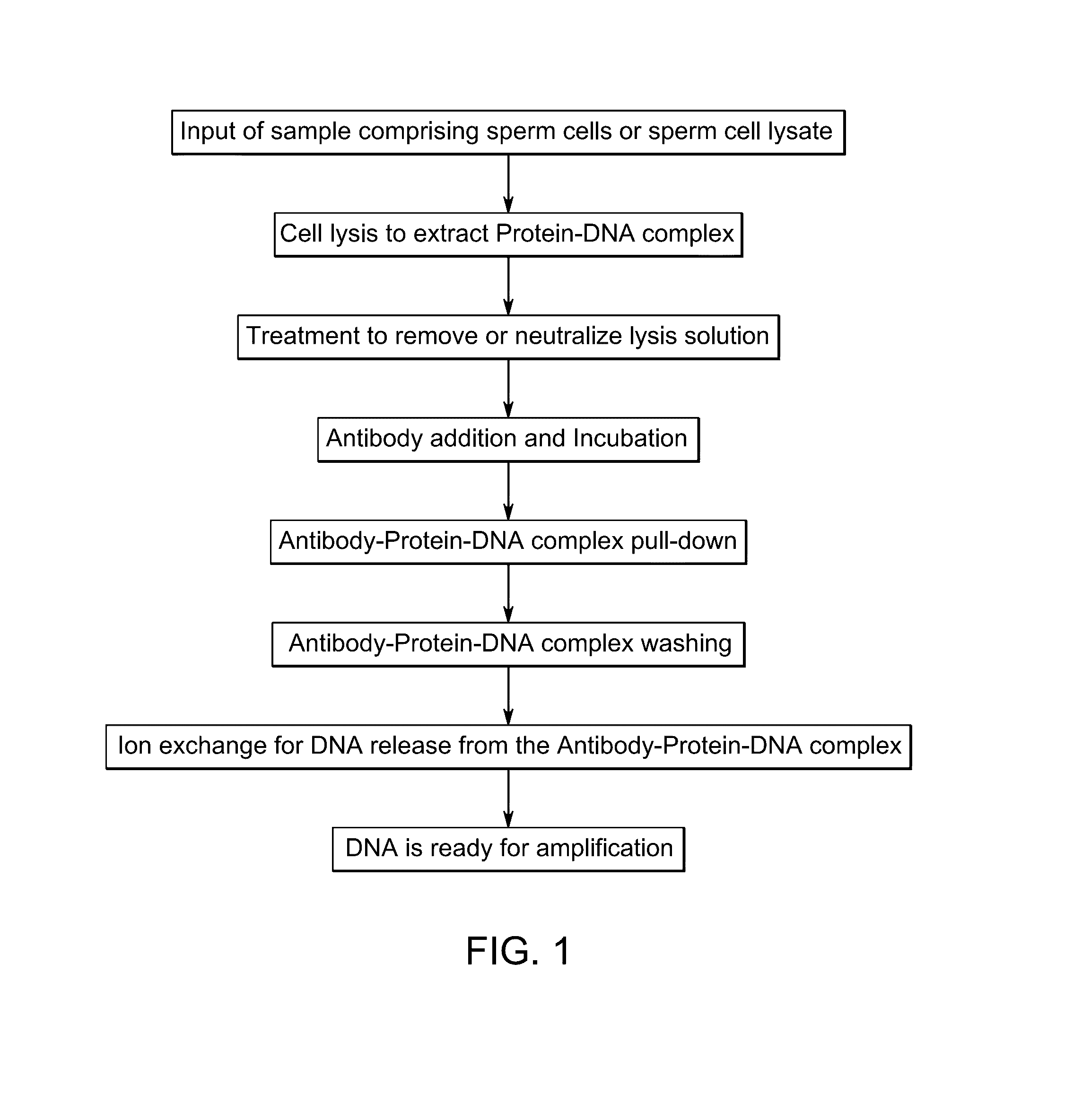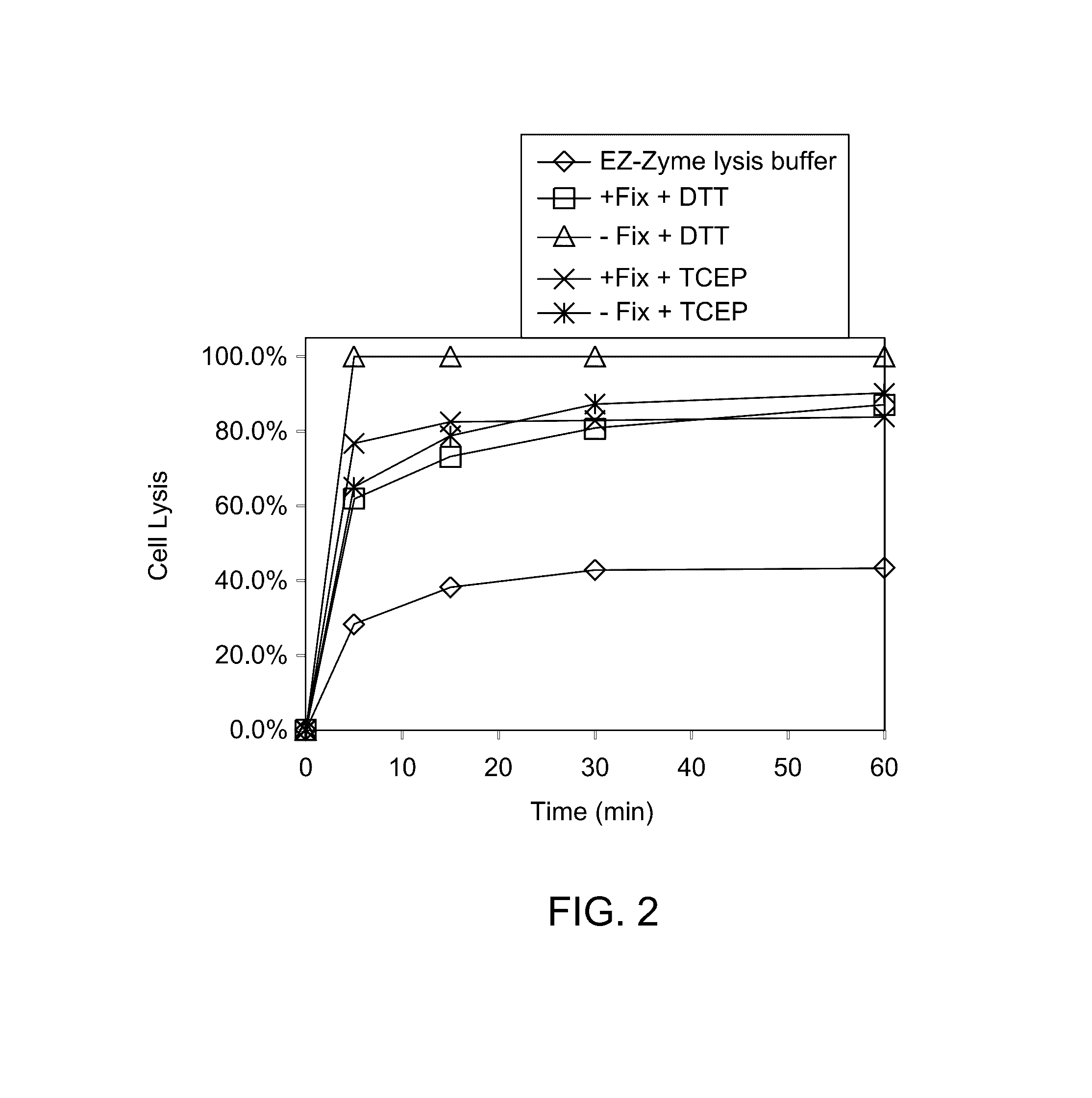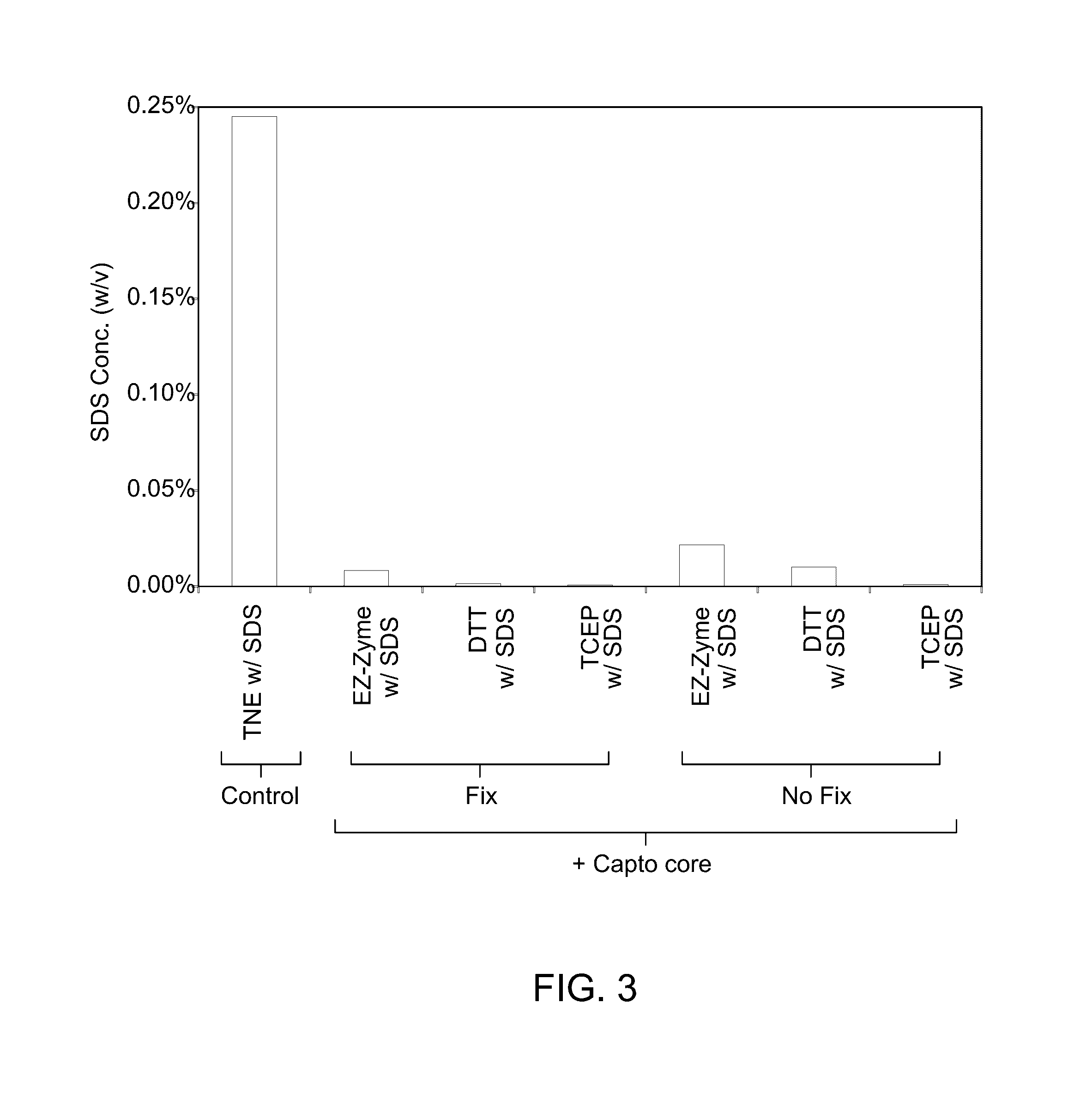Methods of capturing sperm nucleic acids
a nucleic acid and sperm technology, applied in the field of methods of capturing sperm nucleic acids, can solve the problems of inability to obtain, complex methods, and the addition of contaminating species,
- Summary
- Abstract
- Description
- Claims
- Application Information
AI Technical Summary
Benefits of technology
Problems solved by technology
Method used
Image
Examples
example 1
Determination of Optimal Cell Lysis Process for Sperm Cells
[0066]A lysis solution was added to the sample solution comprising sperm cells or sperm cell lysate. The lysis solution was added and incubated for 1 hr at 37° C. and the process was monitored for 1 hr. Traditional cell lysis for ChIP process employs EZ-Zyme lysis buffer (Millipore, US). Sperm cell heads are rich in disulphide bonds, which make them resistant to traditional lysis using EZ-Zyme lysis buffer. To determine the appropriate lysis solution for sperm cells, a series of lysis solutions was tested.
[0067]A lysis solution with DTT and a lysis solution with TCEP were used and the lysis data were compared to determine the better lysis solution for the sperm cells. The lysis process was subjected with pre-fixation (+Fix) or without fixation (−Fix) condition. The fixation is typically performed to stabilize the protein-DNA complex in ChIP process using a reagent, such as formalin. Different lysis conditions were used, incl...
example 2
SDS Sequestration from the Sample Solution
[0069]The SDS, due to its inhibitory effect on antibody binding and DNA polymerases functionality, was sequestered prior to proceed with the next step of antibody incubation and binding. Usually Capto™ core ligand binds to small (less than 700 kda) negatively charged molecules over a wide range of pH and salt concentration. Capto™ core 700 (GE Healthcare Life Sciences, Piscataway, N.J.) was used to sequester the SDS molecules and it was proved to be effective in packed bed format. The post lysis solution (a mixture of sample and lysis solution) was mixed with Capto™ core 700 in a 1:1 ratio. The Capto™ core 700 was added to the post lysis solution and was incubated at room temperature for 15 minutes to ensure complete binding of the SDS molecules by Capto™ core 700 beads. After binding the SDS molecules to the beads, the beads were separated from the post lysis solution. SDS concentration was measured using Stains-All dye (Sigma) SDS quantifi...
example 3
Effect of Fixation on Immunoprecipitation
[0071]Formalin fixation is an essential component of conventional ChIP protocol due to the relatively weak interactions of some protein-DNA complexes. The results of cell lysis and DNA sequestration for protamine-DNA complex showed that neither the inclusion nor the exclusion of sample fixation has any direct effect on the process (FIGS. 2 and 3). The effect of formalin fixation was determined on the interaction of protamine and DNA in protamine-DNA complex during immunoprecipitation or capturing using a capturing agent.
[0072]The antibody pull-down assay was performed with Protein A (Life Technologies), Biotin binder (Life Technologies), and Kilobase binder (Life Technologies), wherein the experiments were performed on samples prepared in the presence or absence of fixation agent. The yield of DNA was determined from the immunoprecipitation reactions of pull-down assay. Roughly 17,500 cells were used for this experiment. Th...
PUM
| Property | Measurement | Unit |
|---|---|---|
| Temperature | aaaaa | aaaaa |
| Temperature | aaaaa | aaaaa |
| Temperature | aaaaa | aaaaa |
Abstract
Description
Claims
Application Information
 Login to View More
Login to View More - R&D
- Intellectual Property
- Life Sciences
- Materials
- Tech Scout
- Unparalleled Data Quality
- Higher Quality Content
- 60% Fewer Hallucinations
Browse by: Latest US Patents, China's latest patents, Technical Efficacy Thesaurus, Application Domain, Technology Topic, Popular Technical Reports.
© 2025 PatSnap. All rights reserved.Legal|Privacy policy|Modern Slavery Act Transparency Statement|Sitemap|About US| Contact US: help@patsnap.com



